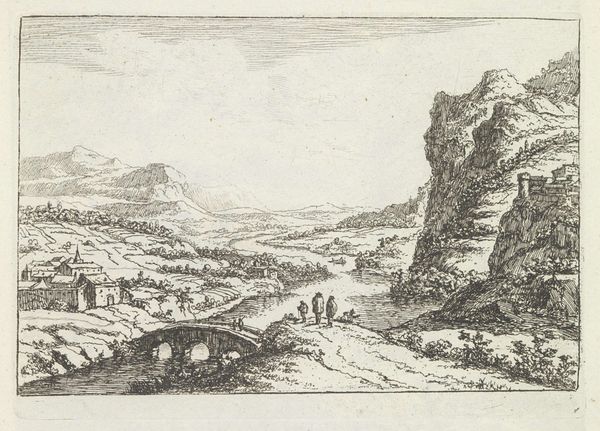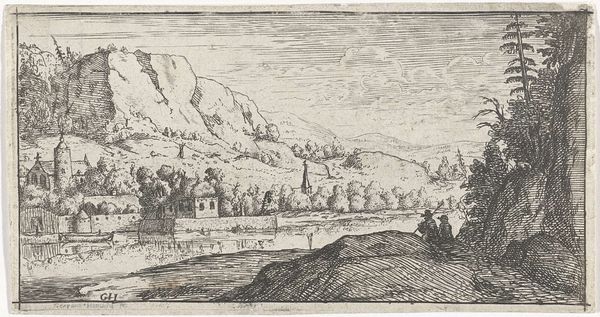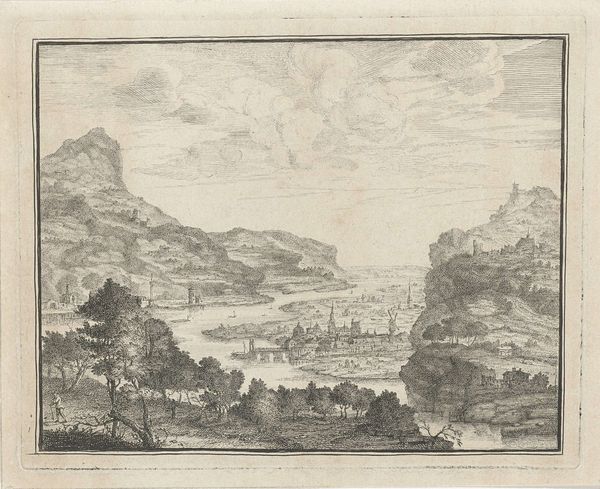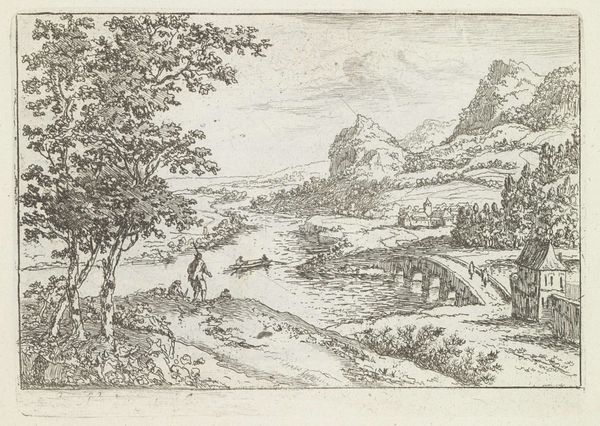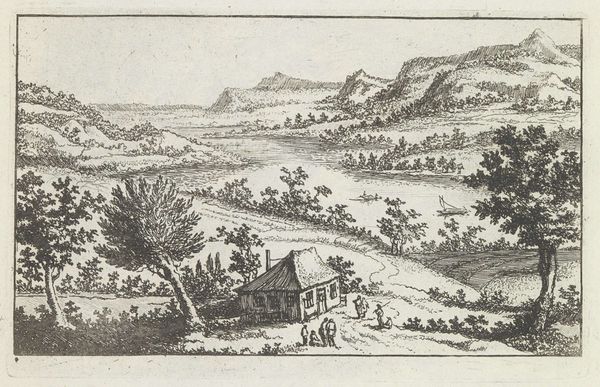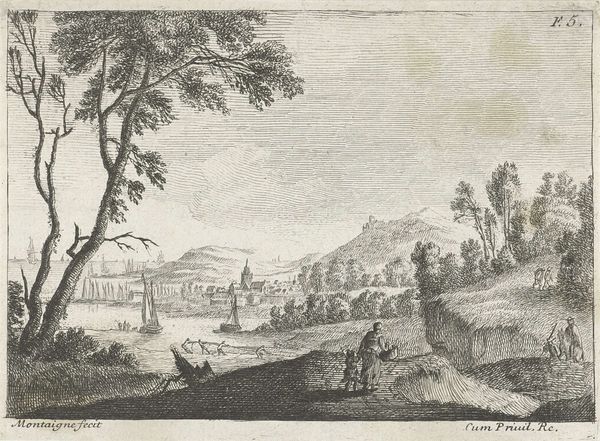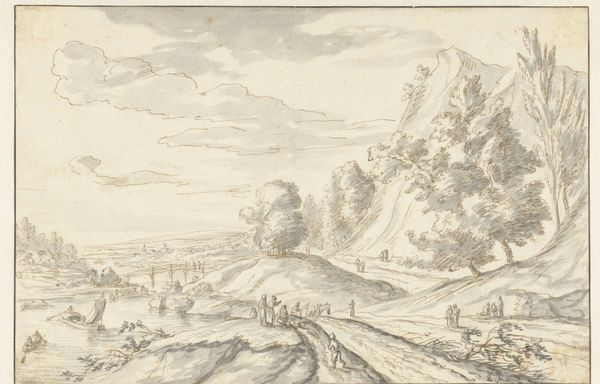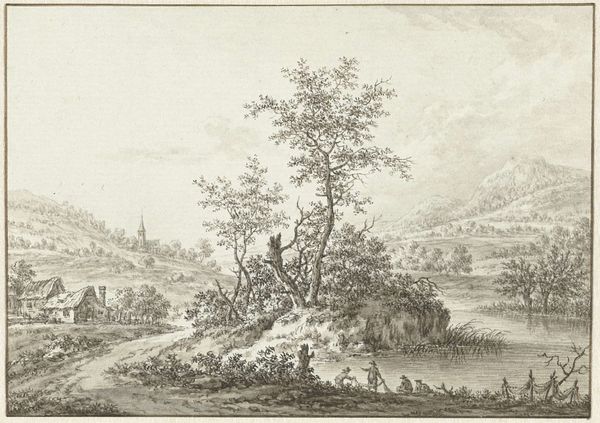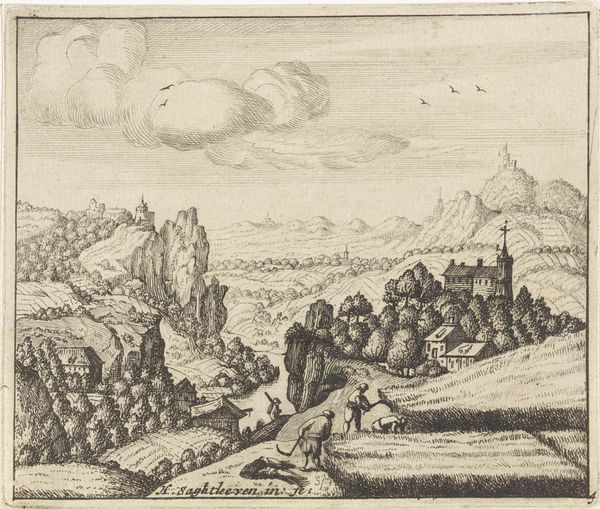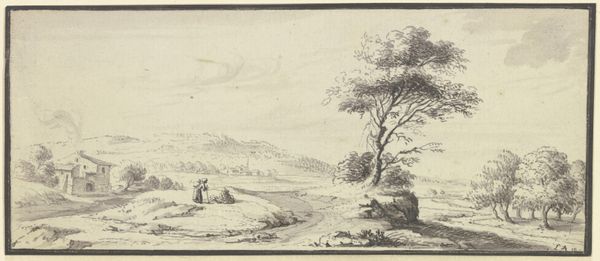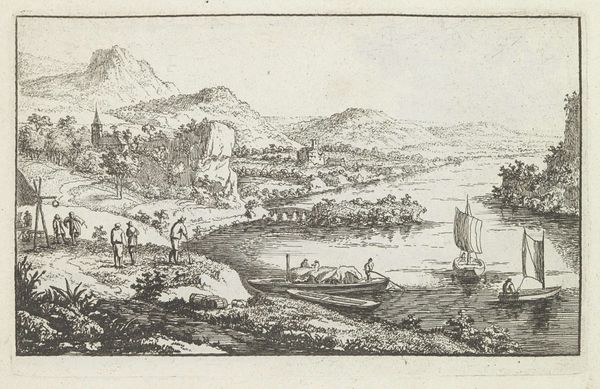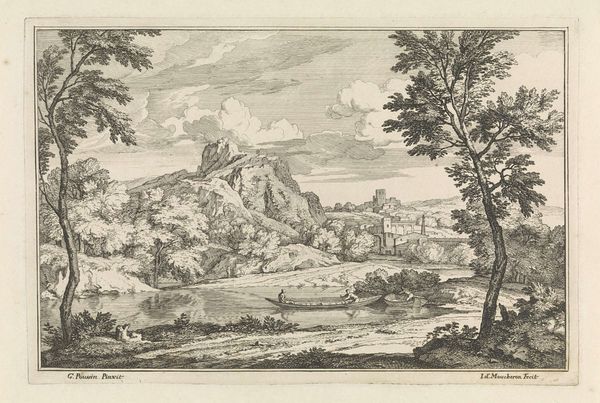
drawing, print, etching, engraving
#
drawing
#
dutch-golden-age
# print
#
etching
#
landscape
#
figuration
#
line
#
engraving
Dimensions: height 98 mm, width 153 mm
Copyright: Rijks Museum: Open Domain
Curator: This is Jan van Almeloveen’s "River Landscape with Walkers", a print from sometime between 1662 and 1833, housed here at the Rijksmuseum. Editor: It's so detailed, almost dizzyingly so. Yet the overall impression is one of airy spaciousness. I find myself feeling a little lost in it. Curator: Landscape imagery in Dutch Golden Age painting speaks to a period of relative prosperity, sure, but more importantly, it echoes an emerging national identity, a need to define "Dutchness" itself through representations of its land. Editor: I am interested by the walkers placed in the lower right corner: they feel deliberately placed there. What purpose would these people serve for its contemporary audience? Curator: Ah, a good question. Wandering has long had its own symbolic language; the walk through nature might function as a pilgrimage, where you find truth simply through movement and experience. I'm struck by their posture, which projects leisure and wealth, but I'm unsure that there are any immediate indicators. Editor: Well, there certainly exists an established and complex social hierarchy at this point in European history. Leisure and travel as displayed here likely excludes working-class subjects. Curator: The clothing is a key aspect in solidifying a feeling of belonging within one’s community. Also, consider how waterways like these provided avenues for trade and global exchange, but in less idealistic ways. How complicit would the artwork be to portray an inaccurate, sanitized vision of Dutchness at this time? Editor: Yes, I appreciate your points; and I think those are questions viewers need to continually engage with when viewing historical landscape pieces such as these. It offers a kind of picturesque that often conveniently excludes many harsh truths and complexities, making sure to present a palatable vision of an existing power structure. Curator: Indeed. The enduring power of images, especially those presented as merely being “realistic,” lies in their subtle capacity to transmit ideological messaging, whether intentionally or otherwise. Editor: Right. In any case, hopefully our listeners can come away understanding more of how complex and involved these sorts of artworks truly are. Curator: And to perhaps recognize the enduring relevance of landscape, not just as scenery, but as a carrier of deep meaning.
Comments
No comments
Be the first to comment and join the conversation on the ultimate creative platform.

